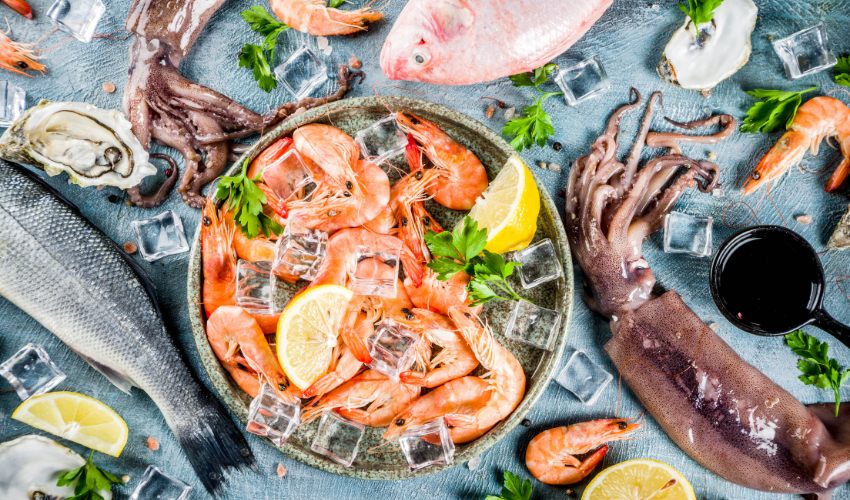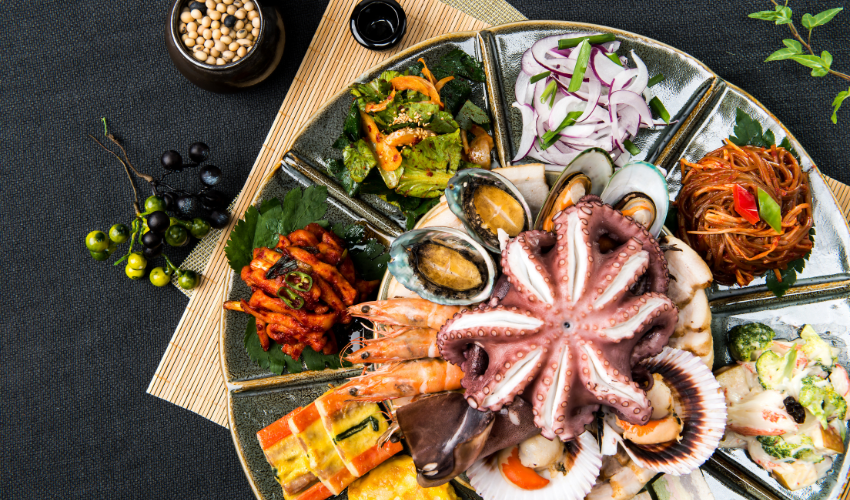Seafood is a popular food choice worldwide. It’s not only delicious but also a great source of protein, vitamins, and minerals. However, not everyone knows what falls under the category of seafood. In this article, we’ll answer the question, “What is considered a seafood?” We’ll also provide information on the different types of seafood, their nutritional value, and how they are used in cooking.
What is considered a seafood?
Seafood is any sea animal that is consumed by humans. This includes fish, shellfish, and other marine animals. Seafood can be classified into two categories: finfish and shellfish. Finfish are fish with fins and scales, while shellfish include animals with shells, such as crabs, lobsters, and shrimp.

Types of Seafood
- Fish: Fish is the most common type of seafood. It includes a wide range of species such as salmon, tuna, cod, and trout.
- Shellfish: Shellfish includes a variety of marine animals that have a shell, such as shrimp, crabs, and lobsters.
- Cephalopods: Cephalopods are a type of mollusk that includes squids, octopuses, and cuttlefish.
- Mollusks: Mollusks are soft-bodied animals with a hard shell. They include oysters, clams, and scallops.
Nutritional Value
Seafood is a great source of protein, vitamins, and minerals. It is low in saturated fat and high in omega-3 fatty acids, which are beneficial for heart health. Some of the key nutrients found in seafood include:
- Protein
- Omega-3 fatty acids
- Vitamin D
- Vitamin B12
- Iron
- Zinc
- Selenium
Cooking with Seafood
Seafood is a versatile ingredient that can be cooked in many ways. It can be grilled, baked, broiled, fried, or even eaten raw. Some popular seafood dishes include sushi, fish and chips, paella, and shrimp scampi. Seafood is also a popular ingredient in soups and stews.

Nutritional Benefits of Seafood
Seafood is a nutrient-dense food that is high in protein, vitamins, and minerals. Some of the health benefits of consuming seafood include:
- Improved heart health: The omega-3 fatty acids found in seafood can help lower the risk of heart disease and stroke.
- Brain health: Seafood is a rich source of DHA, an essential fatty acid that is important for brain health and development.
- Healthy skin: The zinc found in shellfish is essential for healthy skin, hair, and nails.
- Improved immune system: Seafood is rich in vitamins and minerals that are important for a healthy immune system, such as zinc, selenium, and vitamin D.
Bullet Points
- Seafood refers to any sea life that is edible and used for human consumption.
- Fish, shellfish, crustaceans, and cephalopods are all types of seafood.
- Seafood is a rich source of omega-3 fatty acids, protein, vitamins, and minerals.
- When choosing seafood, look for sustainably sourced options and avoid seafood with added chemicals.
- There are many delicious ways to incorporate seafood into your diet, such as grilled fish, shrimp stir-fry, and sushi.
- Pregnant women can safely eat seafood, but should avoid certain types that are high in mercury.
- The recommended amount of seafood to consume per week varies based on age, sex, and health status.
- Fresh seafood should have a mild odor and firm, shiny flesh.
FAQs
Is seafood safe to eat?
Yes, seafood is safe to eat when cooked properly. However, it is important to be cautious when consuming raw or undercooked seafood, as it may contain harmful bacteria or viruses.
Can seafood be frozen?
Yes, seafood can be frozen. It is best to freeze seafood as soon as possible after it is caught or purchased to preserve its freshness.
Is canned seafood healthy?
Canned seafood can be a healthy option, but it is important to read the label and choose products that are low in sodium and free from added sugars.
How much seafood should I eat?
The American Heart Association recommends eating at least two servings of seafood per week.
Are there any risks associated with consuming seafood?
Some people may be allergic to seafood, and consuming raw or undercooked seafood can pose a risk of foodborne illness.
Conclusion
Now that you know what falls under the category of seafood, you can incorporate more of it into your diet to reap its many health benefits. Whether you prefer grilled fish, a shrimp stir-fry, or a bowl of clam chowder, there are plenty of delicious seafood dishes to choose from. Just remember to always practice food safety and choose high-quality seafood that is sustainably sourced. So, next time you’re at the grocery store or a restaurant, you’ll have a better understanding of what is considered a seafood and how it can benefit your health.






















